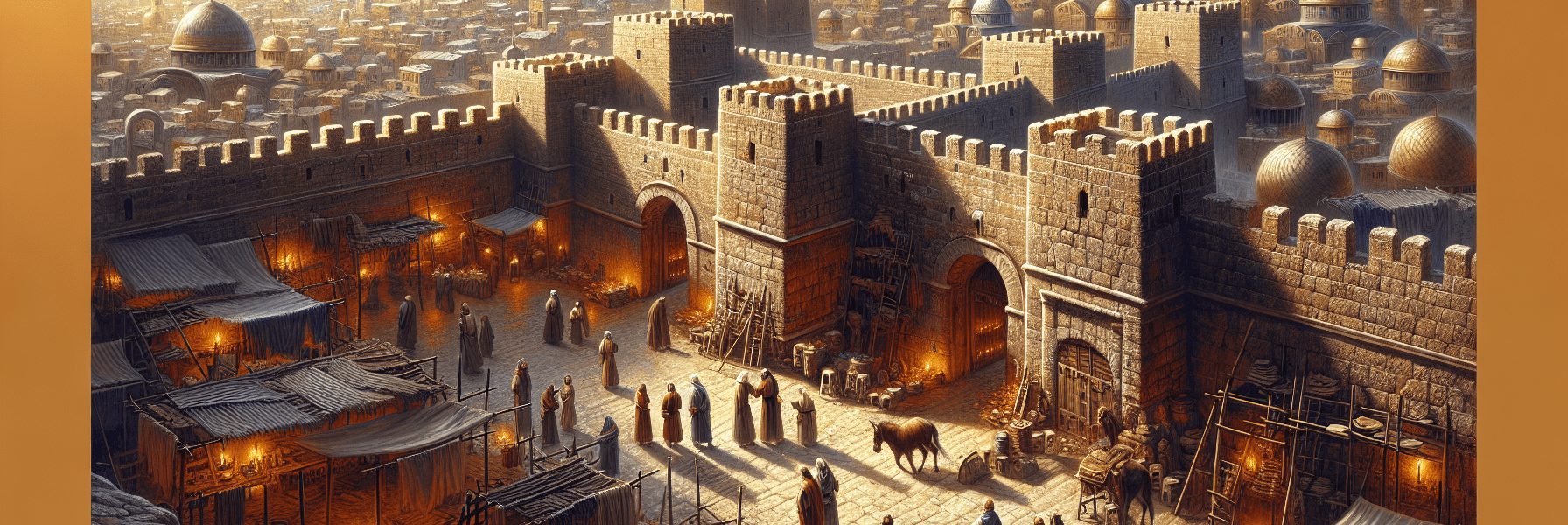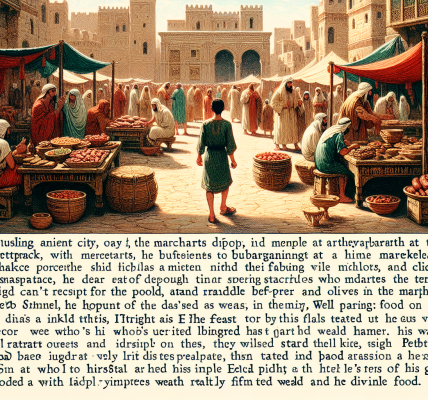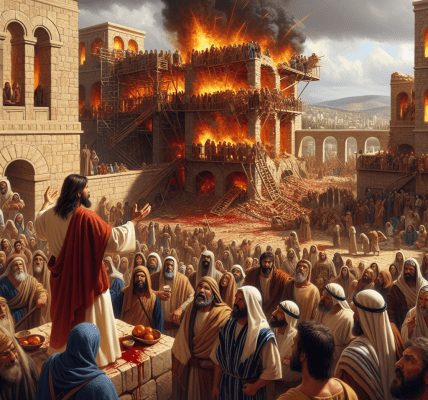**The Settling of Jerusalem: A Story of Faith and Obedience**
In the days when Nehemiah, the cupbearer turned governor, had completed the rebuilding of Jerusalem’s walls, the city stood strong once more. The gates were secured, the breaches repaired, and the people rejoiced in the Lord’s faithfulness. Yet, despite the restored defenses, Jerusalem remained sparsely populated. Many of the returned exiles had settled in the surrounding towns and villages, preferring the familiarity of their ancestral lands to the war-scarred streets of the holy city.
Nehemiah knew that Jerusalem was more than just stones and gates—it was the heart of God’s promise, the dwelling place of His name. A city without people was like a lamp without oil, unable to shine as a beacon to the nations. And so, with prayerful consideration, he sought the Lord’s guidance on how to fill Jerusalem with faithful inhabitants once again.
### **The Casting of Lots**
Gathering the leaders of Judah, Nehemiah declared, “The city must be repopulated. It is not right that the house of our God should stand in a desolate place while the people dwell in comfort elsewhere.” The leaders agreed, and they devised a plan. They would cast lots to choose one out of every ten Israelites to relocate to Jerusalem. This method ensured fairness, trusting that the Lord would direct the outcome according to His will.
The people assembled in the open square before the Water Gate, where scribes and priests stood ready to record the names of those chosen. As the lots were cast, a hush fell over the crowd. Some watched with hopeful anticipation, eager to serve in the holy city. Others trembled, knowing that moving to Jerusalem would mean leaving behind their fields, their vineyards, and the homes they had rebuilt after years of exile.
When the selection was complete, those chosen stepped forward—men, women, and children—their faces a mixture of resolve and uncertainty. The priests blessed them, reminding them of the honor it was to dwell near the house of the Lord. “You are the keepers of Zion,” they proclaimed. “Through you, God will restore His city.”
### **The Faithful Who Volunteered**
Yet not all who came to Jerusalem did so by lot. Some, stirred by zeal for the Lord, willingly offered themselves to live within its walls. Among them were valiant warriors, skilled craftsmen, and Levites who longed to serve in the temple. Their hearts burned with devotion, and they saw their sacrifice not as a burden but as a privilege.
One such man was Maaseiah, a descendant of Judah, who stood before Nehemiah and declared, “My family and I will go up to Jerusalem. Let our home be within its gates, that we may stand guard over the city by day and praise the Lord by night.” His words inspired others, and soon, more families stepped forward, their names recorded in the annals of the faithful.
### **The Distribution of the People**
The new inhabitants settled throughout the city, each family finding its place. The leaders took up residence in the finest quarters, not for pride, but to oversee the welfare of the people. The priests and Levites were given homes near the temple, where they could fulfill their sacred duties without delay.
Among them were the sons of Perez, who settled in the Ophel district, their houses built upon the ancient slopes overlooking the Kidron Valley. The Benjamites, ever loyal to Jerusalem, occupied the northern sections, their watchful eyes scanning the horizon for any sign of trouble.
In the markets and squares, the sound of children playing once again echoed off the stones. The scent of baking bread wafted from open doorways, and the rhythmic clang of blacksmiths’ hammers filled the air. Jerusalem was no longer a ghost of its former self—it was alive, vibrant, and teeming with worship.
### **The Villages Beyond the Walls**
Though many now lived in Jerusalem, the surrounding villages remained vital. The people of Tekoa, Beth-zur, and Anathoth continued to tend their fields, supplying the city with grain, oil, and wine. They too were part of God’s restoration, their labor sustaining those who dwelt within the holy walls.
The Levites, though some lived in Jerusalem, also served in the outlying towns, teaching the Law and ensuring that all Israel remembered the covenant. They traveled from village to village, their scrolls in hand, instructing young and old alike in the ways of the Lord.
### **A City Restored, A People Renewed**
As the sun set over Jerusalem, Nehemiah stood upon the wall, gazing at the flickering lights of homes below. The city was not yet as grand as in the days of Solomon, but it was a beginning—a testament to God’s faithfulness.
The people had obeyed. They had trusted. And now, Jerusalem stood not only as a fortress of stone but as a dwelling place for the faithful. The Lord had brought them back, not just to a land, but to a purpose—to live as His people, holy and set apart.
And so, with hearts full of gratitude, they lifted their voices in praise, knowing that the God who had restored their city would one day restore all things.
**The End.**




